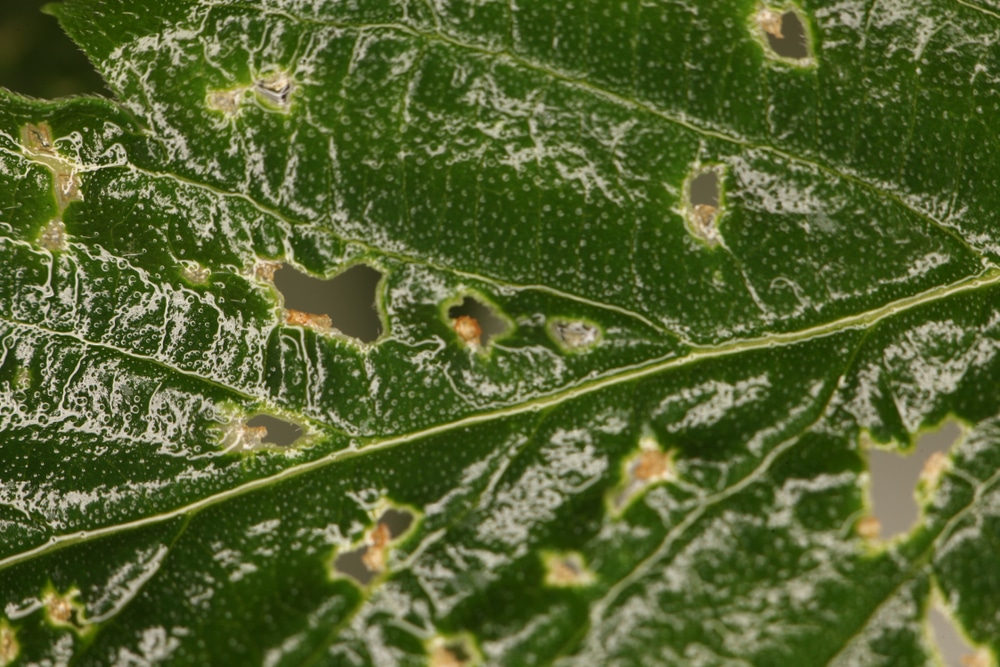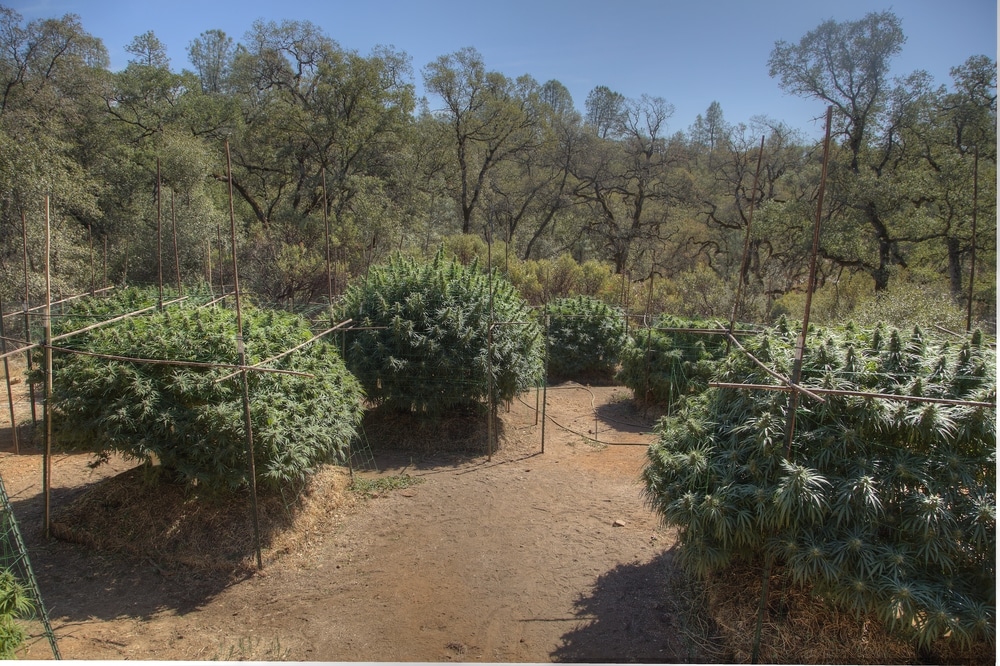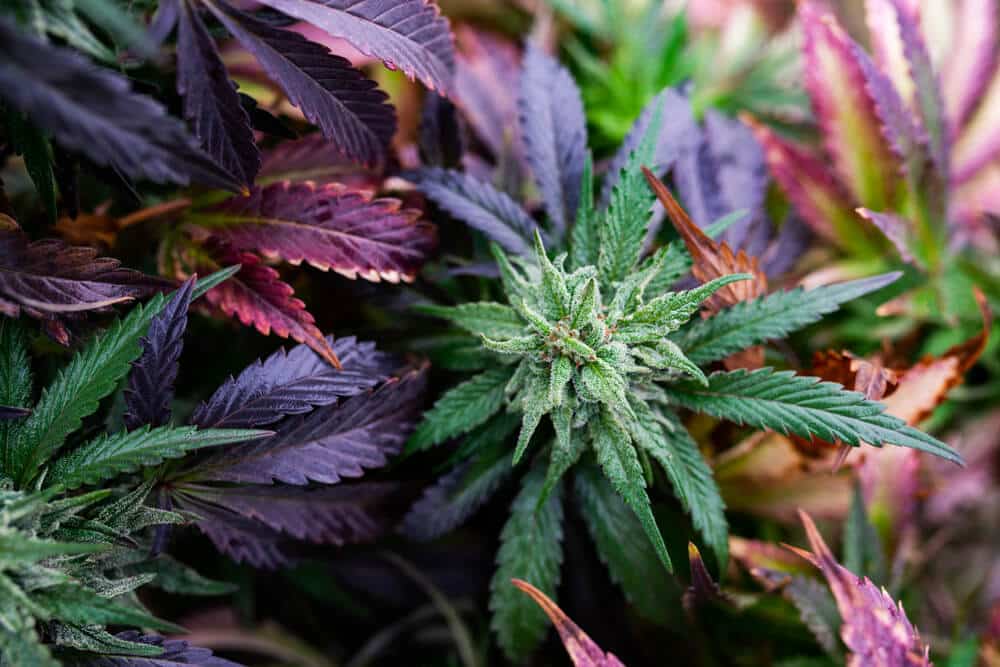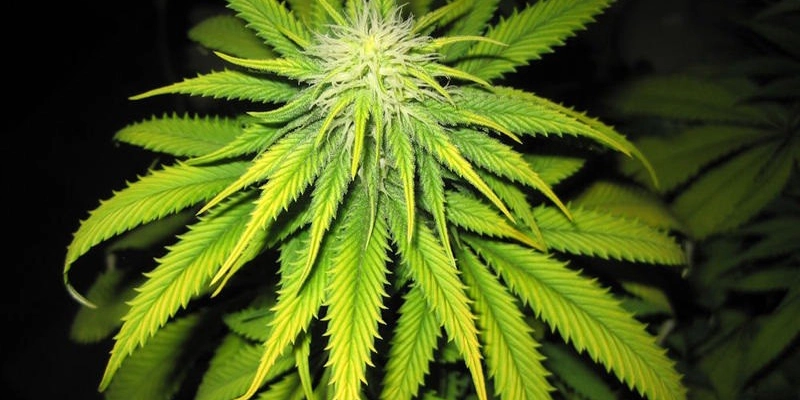No products in the cart.
Marijuana Education
How to Get Rid of Powdery Mildew on Cannabis
Powdery mildew is devastating to encounter in your marijuana plants. It stunts the flowering stage, reduces bud quality, interferes with the plant’s ability to go through photosynthesis, and lowers the overall yield.
Fortunately, it’s possible to prevent powdery mildew using a combination of home remedies and new technologies.
Keep reading to learn how to deal with the issue.
What is powdery mildew?
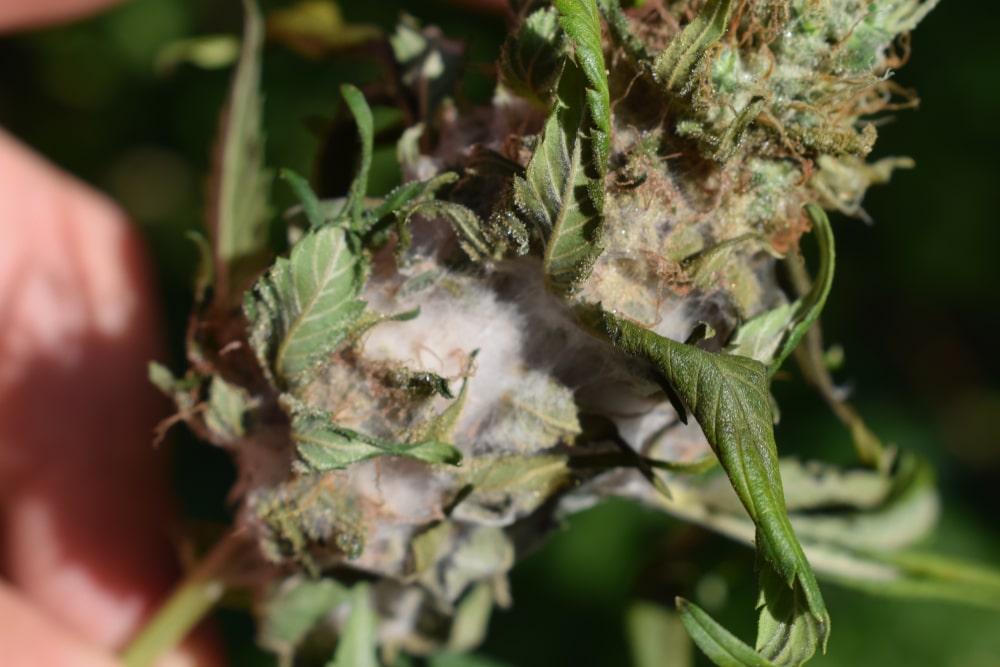
When starting your cannabis growing journey, learning how to treat powdery mildew is vital. You want to get the most out of your plants and prevent problems before they start.
So, what is powdery mildew? It’s brought about by a fungus that tends to develop in hot and humid temperatures, presenting as tiny white spores that embed themselves on the leaves.
When left untreated, the fungal spores may cover all the leaves, causing them to turn yellow and drop from the plant. This issue inhibits photosynthesis and slows down or impedes flowering in infected plants.
Treating powdery mildew in your marijuana plant is a long, patient-filled journey, but it’s possible.
How a cannabis plant gets powdery mildew
Various factors influence powdery mildew infection:
Temperature
White powdery mildew thrives in temperatures above 60°F.
They usually don’t occur in lower temperatures during winter as they’re more receptive to warm air.
Extremely high temperatures of more than 86°F or below 55°F can prevent powdery mildew by delaying production.
Cannabis plants require temperatures of 67–77°F during vegetation and 71–82°F when flowering. These ranges make it complicated to prevent powdery mildew, as you don’t want to change your crop’s ideal conditions.
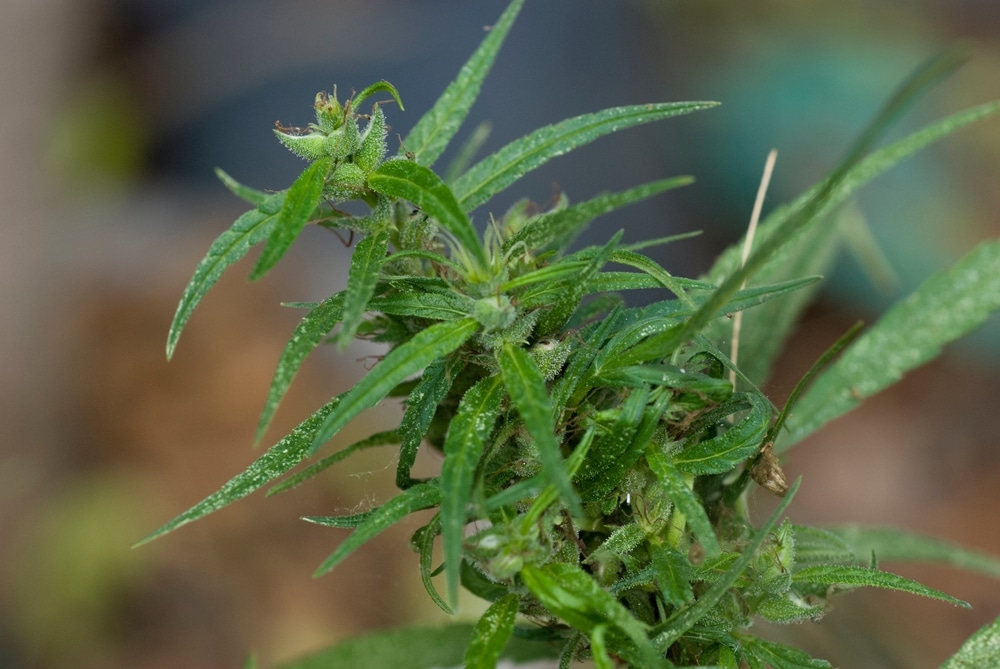
Moisture
High humidity provides a conducive environment for powdery mildew outbreaks. An excellent way to counter this is to ensure a constant airflow between the plants.
For indoor growing, a dehumidifier works well, and if you combine it with one or more fans, powdery mildew cannabis is less likely to occur.
Wind
Powdery mildew usually transmits from one plant to another through the wind.
When a mildew spore lands on a marijuana leaf, it starts its life cycle by embedding itself.
It then spreads horizontally and multiplies until the wind carries new formations to another leaf surface.
Breaking the cycle of powdery mildew formation is crucial in controlling its spread. It’s not extremely difficult to take additional preventative measures and avoid airborne spores from infecting crops across your entire facility.
Indoor growing
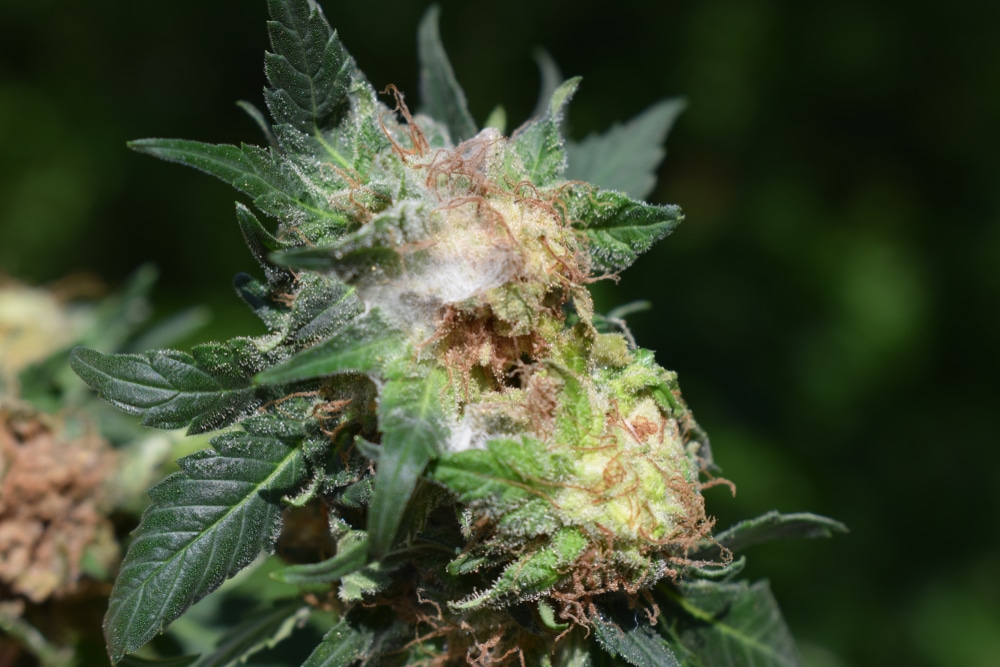
Indoor growing ensures plants always have a conducive environment for growth.
It also means that the temperature and moisture levels remain in the ideal zone for powdery mildew to form in your grow room.
Spread your plants out to help stop powdery mildew from forming and infecting the rest of your crop.
Outdoor growing
Powdery mildew may attack marijuana plants grown outdoors. It occurs more often during seasons with higher humidity levels.
A windy outside environment can encourage the spread of the spores from one plant to another.
Avoid autumn and spring, as these seasons are hot spots for powdery mildew development and other fungal diseases.
How to remove powdery mildew on cannabis
There are several methods to remove powdery mildew from cannabis:
Using milk and water
Using a milk spray to eliminate powdery mildew is an effective home remedy thanks to its antiseptic properties.
The dairy liquid’s proteins react with the sun to produce radicals that act on the fungus and kill it.
Mix a 40% milk and 60% water spray and use it on the affected leaves. Do it every ten days when it’s bright and sunny to ensure it works properly to stop powdery mildew.
Pruning
During the vegetative growth stage, pruning leaves with powdery mildew is a quick, easy way to eliminate the fungus from the plant.
After pruning, throw the infected leaves in the trash immediately. Leaving them on the ground next to the plant or using them to make organic compost gives the mold spores a chance to return to your crop.
Sulfur burner
This method involves spraying your crops with sulfur burners daily. It effectively keeps powdery mildew at bay but can burn the plants when used in excess.
Using electronic filters
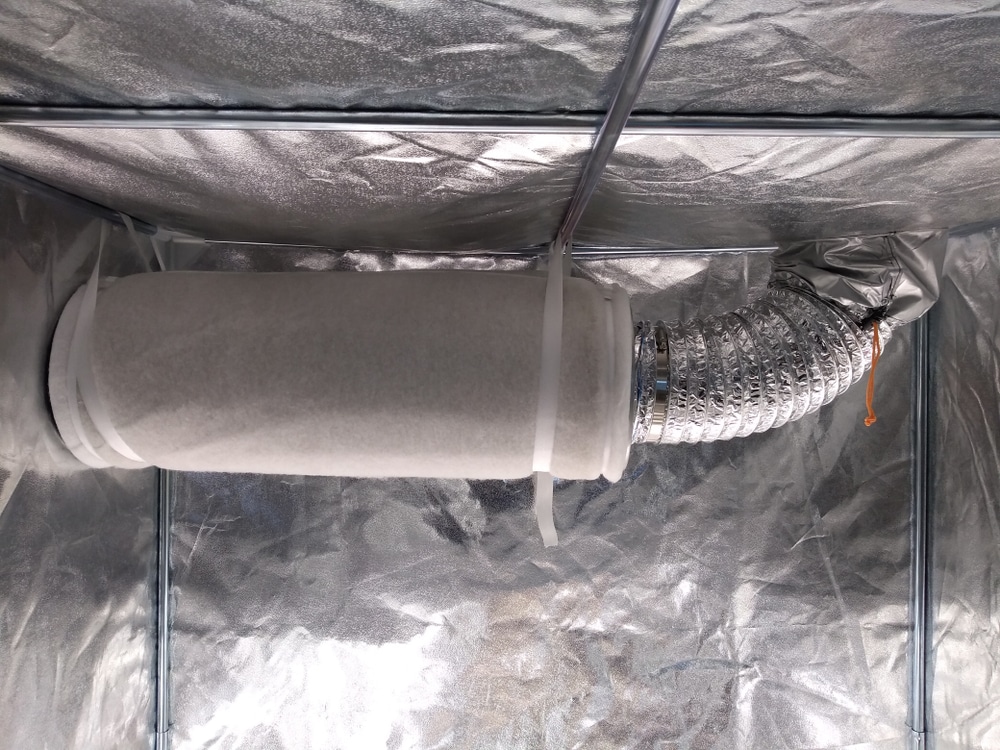
Electronic air filters are helpful in indoor grow rooms. They’re easy to install with the air conditioning system to aid in powdery mildew prevention and keep most fungi and dust particles away from your plants.
Paper towels
A paper towel may sound inefficient, but it provides a temporary solution if you have nothing else.
Wet your paper towel, then gently remove powdery mildew from your plant’s leaves. Be careful not to spread the fungi to other plants in your growing facility, and discard the material immediately.
Other spray products
The following chemicals may be effective in removing powdery mildew:
- Hydrogen peroxide: Helps to decontaminate your grow space and equipment. Applying it through your ventilation system at the end of each growth cycle is a beneficial powdery mildew treatment.
- Neem oil: Works in treating fungi and infestation, usually taking around 24 hours to clear mildew on cannabis. Using it in large quantities can end up burning the weed plants and some insects like bees, and it’s more efficient in small-scale grows.
- Biological fungicides: Help in area-specific treatment to treat powdery mildew on cannabis plants. You may need to reapply it when new growth appears. They’re generally safer than conventional fungicides.
- Milstop: A foliar fungicide product that kills powdery mildew on cannabis by pulling moisture from the fungal growing strands and spores.
- Apple cider vinegar: A trusted traditional method of preventing powdery mildew, made with two teaspoons of the cooking ingredient for every quart of water.
- Baking Soda: May help raise pH levels to remove fungi in cannabis crops, but it could harm plant health. Add three tablespoons to a gallon of water, then add small amounts of dish soap and a spoonful of cooking oil.
- Fish oil sprays: Like neem oil sprays, fish oil may also be effective in the proper treatment of powdery mildew. Some growers use sesame oil as well.
Powdery mildew prevention tips and tricks
Preventative care is always the best solution to rid yourself of a problem before it starts. The following practices can help keep your garden free from fungi and kill powdery mildew.
Maintain continuous scouting of your plants
Monitor your plants through their growth stages, from germination to seedling to vegetative and flowering.
Check the top and bottom of the fan leaves and smaller ones for early signs of powdery mildew.
Inspect your entire plant for fungus, especially parts that don’t receive too much light. These are usually prime spots where the problems first start appearing.
Water the soil, not the leaves
Fungi may stay dormant for a long time, but standing water and increased relative humidity could contribute to the formation of powdery mildew. Many growers ensure their growing environment has sufficient draining systems to prevent these issues.
Sometimes the spores may infect the soil, making it easy to transfer the fungi to the plant through splashing.
To prevent this, practice mulching to cover up soil that has mildew spores so that when you water the ground, you don’t splash the fungi onto the marijuana leaves.
Many growers use drip irrigation in their grow rooms or outdoors to help stop powdery mildew.
Practice spacing your cannabis plants
Spacing your cannabis plants helps prevent the build-up of relative humidity conducive for the powdery mildew spores to thrive.
Increase your cannabis yields by ridding yourself of powdery mildew
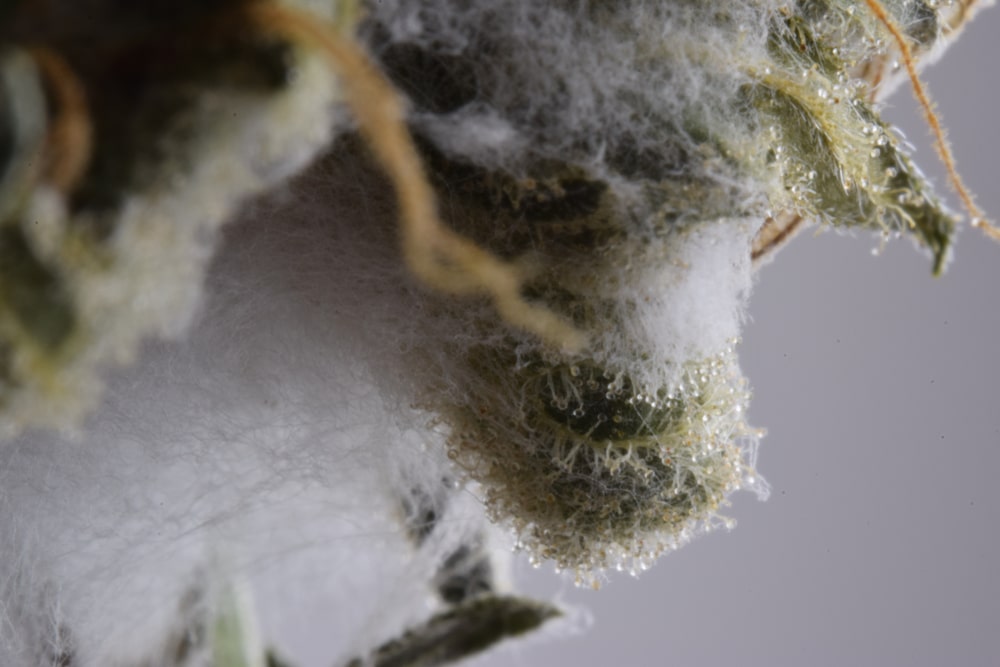
A stubborn fungus like powdery mildew can easily prevent good yields, so it’s vital to implement preventative measures to keep the fungus away.
If the fungus infects your plants, consider using organic methods first, like milk spray, neem oil, or apple cider vinegar.
If these aren’t successful, use conventional fungicides like sulfur and hydrogen peroxide to stop powdery mildew.
Visit The Seed Fair to learn more about how to prevent and treat other diseases or issues that may affect your cannabis crop.
FAQs about powdery mildew
Do you still have queries about treating powdery mildew? Find common questions and answers below.
What kills powdery mildew instantly?
The fastest way to eliminate powdery mildew spores is by using approved chemical fungicides like sulfur, neem oil, and potassium or sodium bicarbonate. Exercise care when using them, so you don’t destroy your cannabis plants.
Can cannabis recover from powdery mildew?
If detected early enough and treated using organic and chemical fungicides, your cannabis plants can recover. If they’re in the flowering stage and the powdery mildew spores have affected the buds, it may be a little late to save the plant.
Harvesting buds infested with powdery mildew isn’t safe due to the respiratory health conditions that it may cause.
Should I remove leaves with powdery mildew?
It depends on the extent of the infection. If the fungus has only infected a few leaves, it is okay to remove them. If the powdery mildew has affected several areas, you may need more extreme alternative methods, like spraying a chemical fungicide.


